Either way, when we moved into this apartment a year ago, we learned that our neighbor right across the hall had just gotten into homebrewing. We've both got 500 square foot apartments, but he lives alone, and in place of my bedroom, he has a full-size kitchen. Over the past year, I've watched him grow as a homebrewer, and have had the pleasure of tasting enough of his beers that I can safely say he's gotten the hang of it. When he invited me to come along to San Francisco Brewcraft with him, I knew it was time to stop talking and start doing.
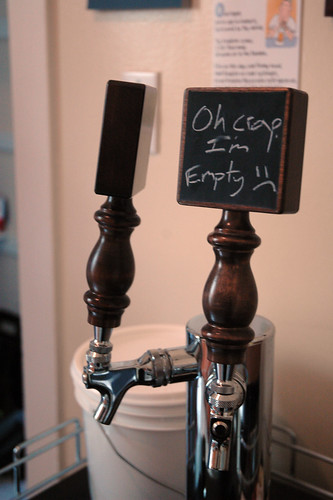
Plus, we're clearly running out of beer. (Fridges not pictured.)
I won't provide terribly accurate instructions here, for a few reasons. One, I'm not very good at brewing yet. I haven't even tried this one to know if it's a success, and I won't get to for another 54 days or so. Two, the good folks over at Brewcraft are much smarter than me and will provide you with fantastic information on the step-by-step process.

And if you're not in San Francisco, there is so much advice on the internet and in well-written books that I wouldn't possibly want to lead you astray. But if you're looking for a little inspiration and convincing that you can be your own one-person brewery, here we go.

Step one: Boil water. Seen here is about two gallons.

Step two: Add grains. A couple pounds of barley for me.

Step three: Pulling out the grains and letting as much of the remaining liquid as possible drain into your brewpot. Helps to have a buddy, because you will stand there obsessively moving your grains around so you can get the laaaaast bit out of there, and those wet grains get heavy. This justifies the homebrewer skipping the gym and drinking another beer.
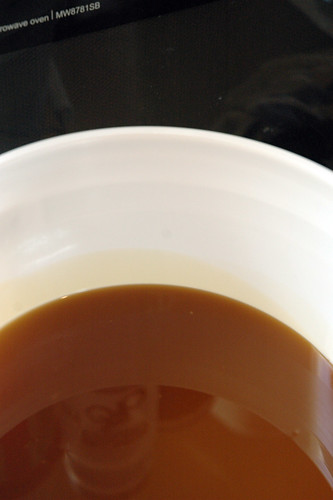
Step four: Malt extract. We're a partial mash sort of household for now, though Justin is making some very strong moves to get to all-grain brewing. We're not there yet, so here's my bucket of incredibly sticky malt extract. You will think this looks like caramel and want to stick your fingers in it and eat it. You should probably resist this urge.
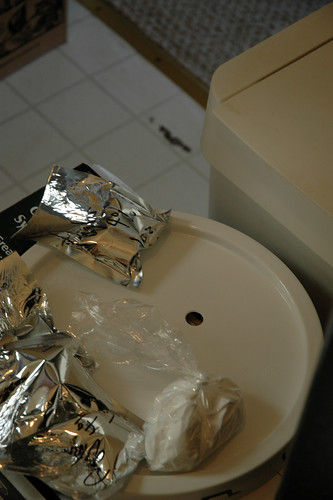
Step five: The boil. You'll add your hops according to a schedule (and while this is certainly something you can figure out on your own, the gentlemen at Brewcraft wrote mine for me based on the type of beer I'm striving to make with the hops I've chosen to use), over the course of an hour.
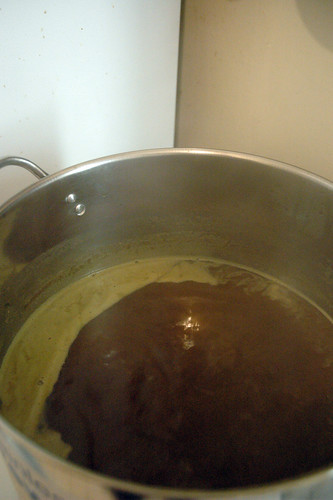
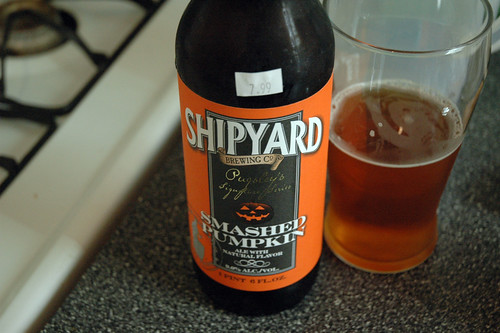
You should probably drink one of these. An hour is a really long time.
When all is said and done, you'll want to cool that puppy down. No pictures of this part, but for us, it involves throwing that big pot into a bathtub filled with water and ice, and me running back and forth between the living room and the bathroom for the next 45 minutes constantly, obsessively checking the temperature.

Now you'll get to the last part that substantially makes a difference in your beer recipe, and happens to be my favorite variable: adding your yeast. Your brew needs to be cool enough to not kill the yeast, which is why the very impatient pot-in-bathtub step is so terribly important. Pour it into your primary fermenter, pour in the yeast, throw an airlock on that little guy, and resist the urge to touch it for 6-7 days or so, even if it stops bubbling and you're getting really worried about it. I promise.
It certainly does help to homebrew with a friend, for no other reason than you will potentially get quite bored, and/or distracted by college football, because it's a fairly lengthy process. All in all it probably takes us around 4 hours to get a beer from water to yeasty. While one of you is stirring and watching the clock (or watching football and letting an iPhone timer go off), though, the other one of you can be handling all of the other in-home brewery operations. And trust me, you want to have other home brewery operations.
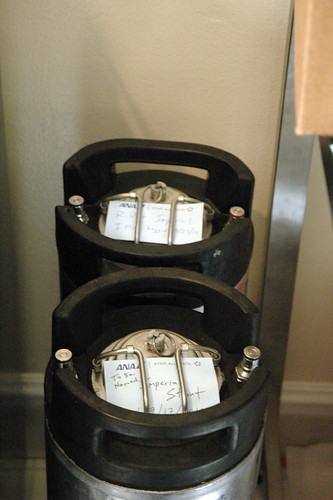
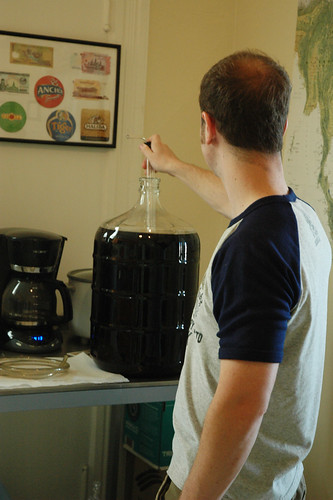
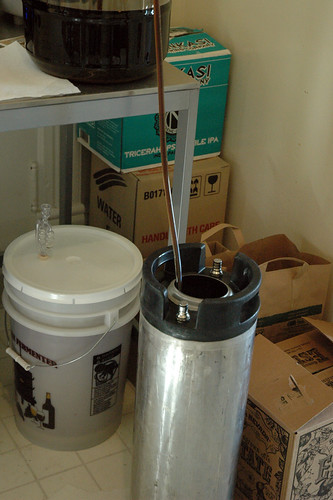

It's been such an inspiration over the past two weeks to talk to brewers that started just like this. I'm not sure where we're going yet, and I can't imagine either of us will quit our jobs any time soon, but it does make such a difference in being able to talk to other people about what they're doing. When it's your hands pouring in the grains and sprinkling in the hops and shoveling giant glass jars around, you feel so much more connected to your beer. And, beer-is-love discussion aside, we're about to have five gallons of English IPA in our home for less than $50 total. Cheers to that!
No comments:
Post a Comment